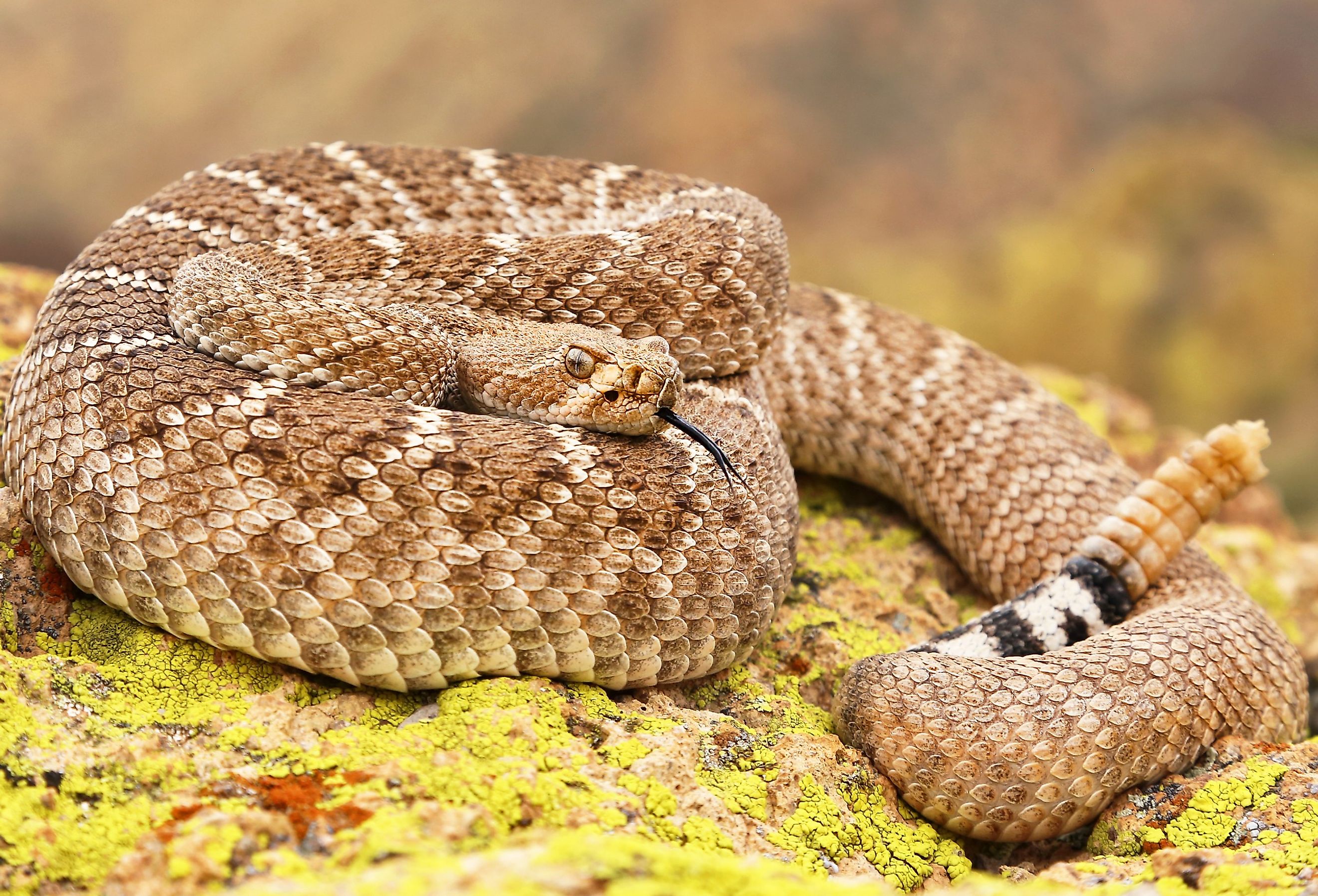
The 11 Deadliest Animals in Arizona
Arizona is a desert and mountainous state located in the southern United States. The sixth largest state, Arizona, shares its borders with California, Nevada, Utah, and New Mexico, and Mexico's Sonora state. It is often characterized by its dry, climate, apt for cacti and the Grand Canyon, but the area is also home to part of the Colorado Plateau as well as the largest evergreen ponderosa pine trees in the world. With its desert terrain comes a lot of dangers, though, including a high volume of deadly animals. According to the Venomous and Poisonous Animals in Arizona quick reference guide published by the Arizona Game and Fish Department, uncover the top 11 deadliest animals in Arizona.
Scorpions
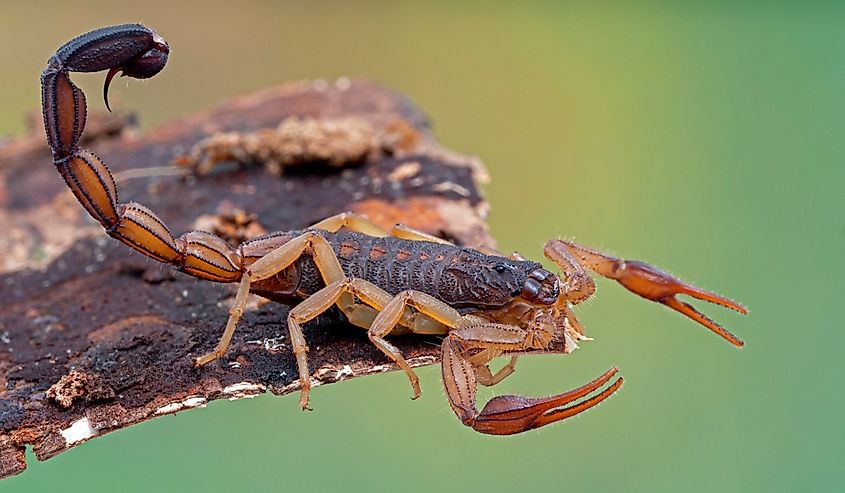
There are an estimated 40 to 60 species of scorpions in Arizona. The Bark Scorpion is the leading cause of medical visits. Bark scorpions are widely found throughout the state and are often found under rocks, logs, bark, and other surfaces where they can easily hide. They are typically between 1 and 3 inches in length and are the most common species of scorpion found in homes in the state.
Scorpions deliver their venom through their stinger on the end of their tail. Although a nip from their claws can pack a punch, they merely hold on to their prey with their claws and do not exert venom through them. You are most likely to encounter scorpions at night during the warmer months, and they can live up to 25 years of age, depending on the species.
Brown Spiders

Part of what makes Brown Spiders so dangerous is how small and inconspicuous they are. Brown spiders are one of the most dangerous species of spider in Arizona, closely related to the infamous and dangerous brown recluse. There are five species of brown spider in the state and their bites can sometimes go unnoticed for up to eight hours before discomfort begins.
Their bites are often distinguishable by a small sore that begins to spread from the bite site. If left untreated, these sores can grow, leading to permanent tissue damage or local necrosis. If you notice a peculiar bite that begins to spread, seek immediate medical attention.
Black Widow Spiders

Like brown spiders, Black Widows are another dangerous species in Arizona. These spiders are relatively famous for having big females, around 1.5 inches in length, and small males less than half the size. Black widow females are distinguishably black with a bright red-orange hourglass shape on the outside of their abdomen.
The males, by contrast, are less distinguishable and typically brown with cream markings on their legs and abdomen. A black widow bite can lead to severe pain, difficulty breathing, and cramping, but very effective antivenom is widely available in medical centers throughout the state.
Centipedes
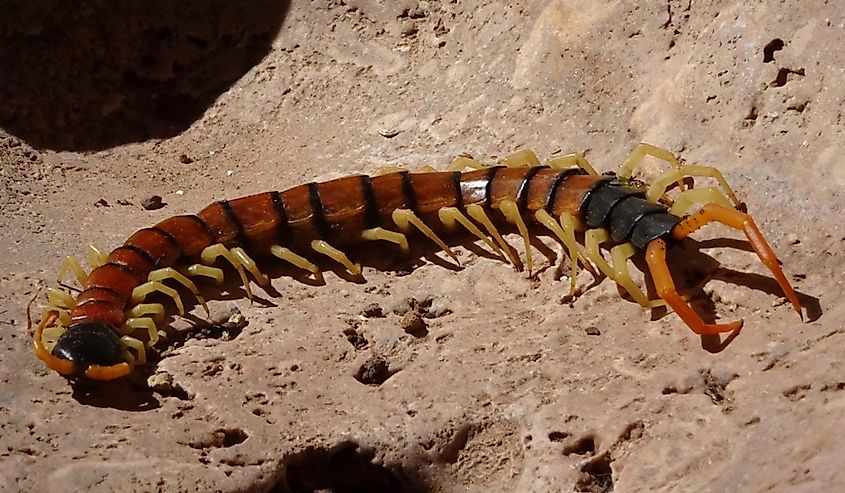
There are two types of centipedes living in the Sonoran Desert. The giant desert centipede and the common desert centipede are both identifiable through their flat bodies comprised of multiple segments and multiple legs. While the giant centipede is orange with a black head and tail, the common centipede is mostly tan and brown.
The desert centipede can reach up to 8 inches in length. It can deliver venom both through a bite and through its gnathopods, a pair of legs under its head. These bites are often very painful and can remain very sensitive for weeks. Those sensitive or allergic to the venom will likely require medical attention.
Velvet Ants
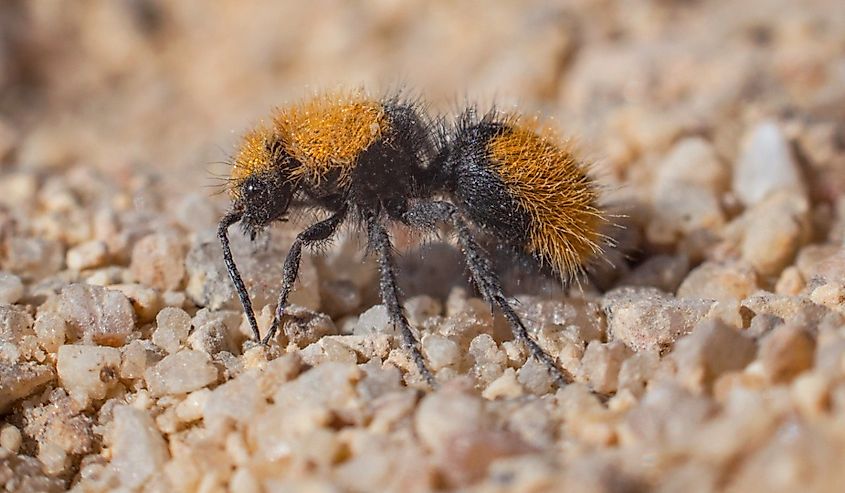
Velvet ants are actually a species of wasp that resembles ants. The females are flightless and can range in size between 1/8 and a full inch in length. They are covered in little furs all over their bodies, which can either be black with a yellowish-white abdomen or red. There are two varieties of velvet ants: the thistledown and the red. Their size is dependent on the host that they take over during their development.
Only the females have stingers, but the males are able to fly, and both are active during the day, making an encounter more likely. Their nickname is "cow killer" or "mule killer" because their sting is incredibly painful, and they normally sting multiple times when they do.
Conenose Bugs
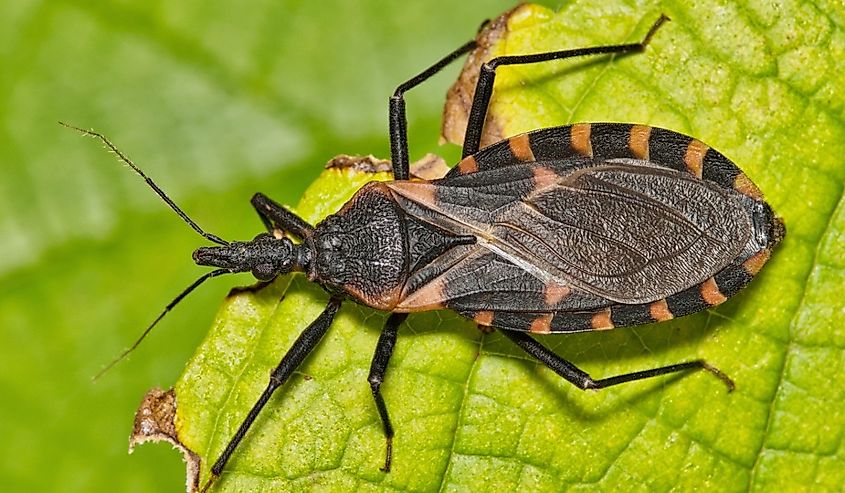
Infamously known as the "Kissing Bug," Conenose bugs can transmit Chagas' disease. They regularly feed on rodents and other wild animals but also bite humans. They are small, brown bugs with long cone-shaped heads and dark brown or black bodies.
People can develop allergies to this bug's bite, making them more dangerous for those individuals. What makes Conenose bugs so dangerous is the Chagas disease that one can develop from the poop of an infected bug infecting the bite site or entering the body through unwashed hands.
Blister Beetles
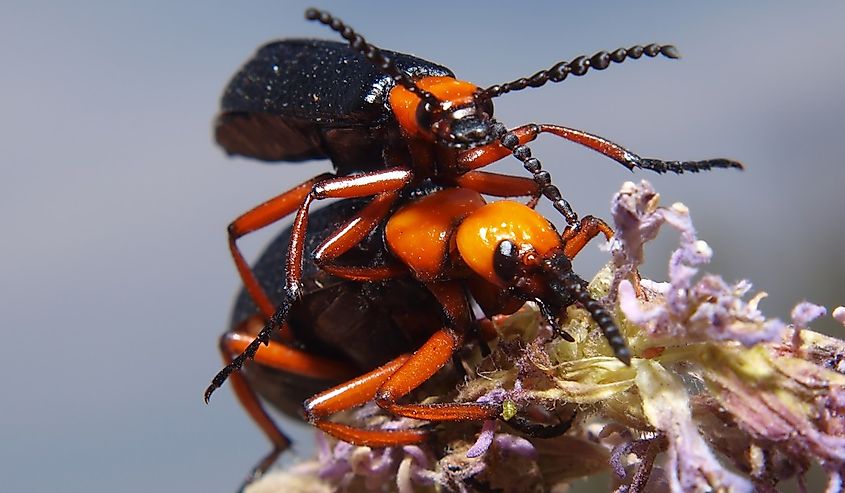
There are multiple different types of blister beetles, but they are most identifiable through their wider neck than head along with their wings, creating a strong neck appearance. They are easily mistaken for checkered beetles, ground beetles, among other beetles native to Arizona. What makes blister beetles harmful to humans is the cantharidin, a defense chemical that they excrete when threatened. They are most active during the spring, summer, and fall, particularly after heavier rains.
The blister that occurs when skin comes into contact with cantharidin is comparable to poison ivy, and can be dangerous to some people more sensitive to the chemical or who have had repeat exposures.
Rattlesnakes
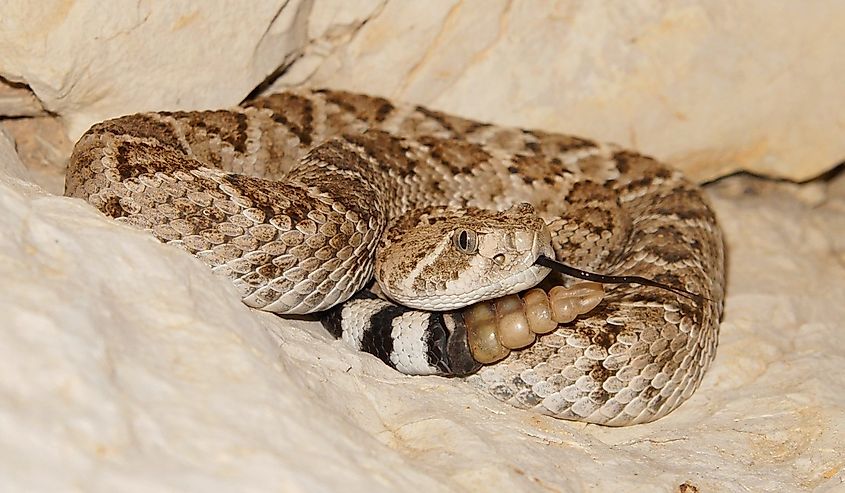
Rattlesnakes are a very common venomous breed found across much of the United States. There are 13 known species of rattlesnakes throughout Arizona, with the western diamondback rattlesnake being the most aggressive towards humans. It is also the most common rattlesnake to encounter in the state, and it is accountable for most of the bites and deaths due to rattlesnakes in the state.
If you suspect a bite from a rattlesnake, you should seek medical attention quickly. The venom causes rapid swelling of the affected area and can lead to toxicity, and then death if left untreated.
Coral Snakes
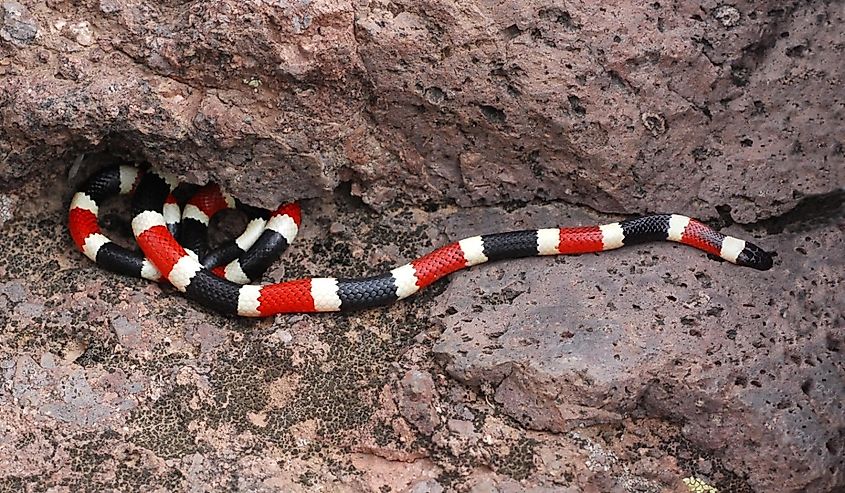
The Arizona coral snake is a small snake around 13 to 21 inches in length, identifiable through its brightly colored, alternating red and black thick strips buffered with thin yellow strips. These snakes have a venom comparable to that of a cobra's but their delivery is less effective due to the small size of their head and fangs. These snakes are mostly active during the rainier months and in the evenings.
Although there have not been any recorded deaths in the state due to the coral snake, immediate medical attention is recommended in order to receive an appropriate antivenom.
Lyre Snakes
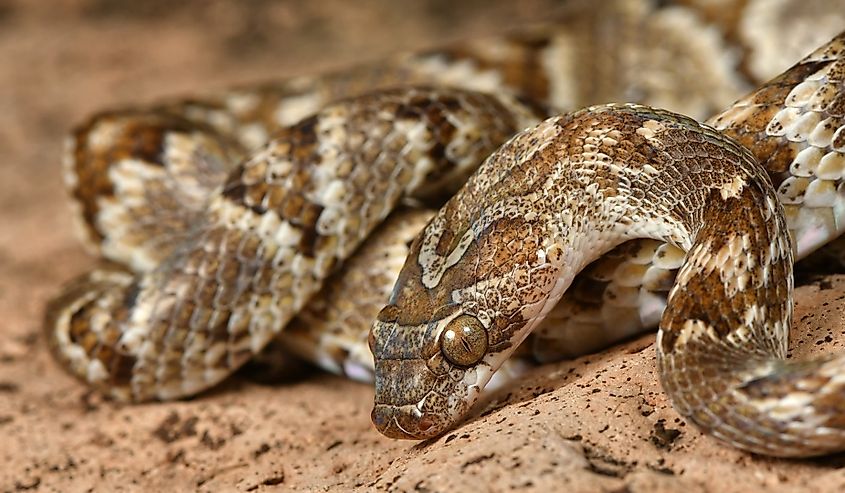
Lyre snakes are part of a larger group of rear-fanged snakes. These snakes can reach up to four feet in length and are distinguishable through their triangular-shaped head, dark brown saddles, and a light back. These snakes are nocturnal and will shake their tails and strike when startled. Although there are many species of rear-fanged snakes in Arizona, the Lyre snake is the only one big enough for their venom to be of concern to humans.
If you are bitten by one of these snakes and start to experience concerning symptoms like intense pain, swelling, or difficulty breathing, seek medical attention promptly.
Gila Monsters
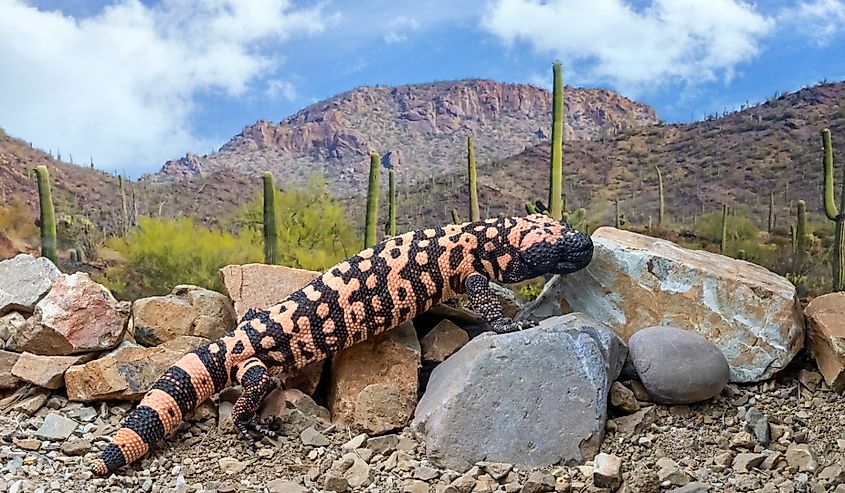
Although Gila monsters are one of the rarest species of reptile to encounter across the Sonoran Desert, they are one of only two venomous lizards in North America. They grow to be around 22 inches in length, weighing up to one pound. They are short, with rounded bodies and tail as well as a big head. Gila monsters produce venom in their lower jaw, delivering them through chewing on their victim; the more they bite, the more venom they excrete into their prey. When they bite, it is often hard to get them to release without the use of a hard object. Although these bites are very rare and are often not cause for concern, repeat or prolonged exposure, a dirty bite wound, or a bite on a child can be a medical emergency and potentially fatal.
These 11 deadly animals are not the only ones in Arizona. People are at risk of bee or wasp stings that may be deadly due to a known or dormant allergy. There are also multiple species of ants and caterpillars that pose some risk to humans, and with enough contact with their venom, can be deadly. Many species of caterpillars have rusticating hair that can cause burning when brushed against. The Puss Caterpillar's hairs are so venomous that their stings often require medical attention.
While it's important to be aware of the dangers in your environment, the presence of these deadly animals should not be a reason to avoid visiting Arizona or being afraid of exploring its natural beauties. Being up-to-date on new species of dangerous animals is important to recognize the signs of an animal to stay away from or the signs that a bite, sting, or rash could require medical attention. That said, medical professionals, especially in family practices and emergency rooms across the state, are well-trained and equipped to deal with any unfortunate encounters, and you are likely to make a swift recovery in the unlikely event you come face to face with one of these creatures. It's also important to remember that most of these animals are more afraid of you than you are of them, and their biting or stinging is often a response to feeling threatened. If you leave them alone, they will likely leave you alone as well.











